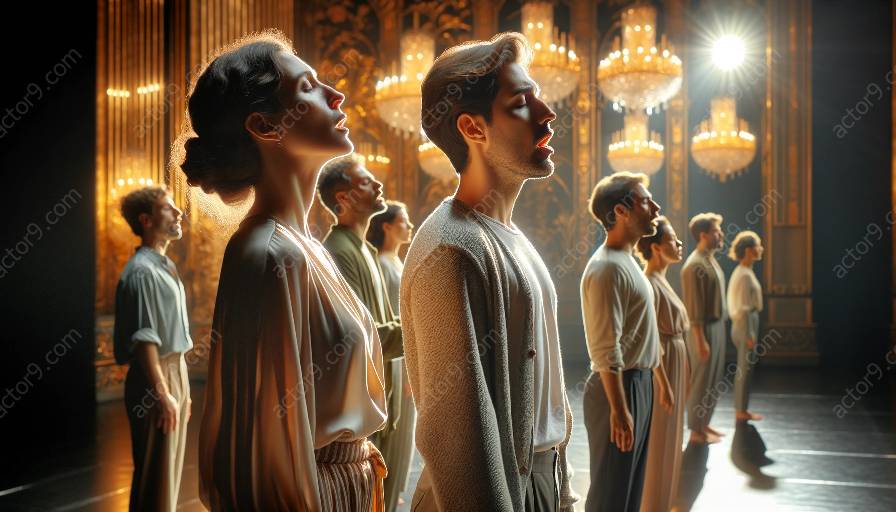The Linklater voice technique has gained popularity in the realm of acting for its emphasis on freeing the voice and enhancing vocal expressiveness. Vocal exercises play a crucial role in this technique, contributing to improved voice projection, articulation, and emotional resonance in performances.
Understanding Linklater Voice Technique
The Linklater voice technique, developed by renowned voice coach Kristin Linklater, focuses on releasing natural voice, encouraging emotional connection, and developing vocal freedom for actors. Vocal exercises in this technique notably target the breath, resonance, and articulation to expand the voice's range and creative potential.
Common Vocal Exercises in Linklater Voice Technique
The following are some of the vocal exercises commonly utilized in the Linklater voice technique, each serving a specific purpose in nurturing vocal expression and enhancing acting techniques:
- 1. Stretching and Freeing the Voice: Linklater's technique often begins with exercises aiming to release tension and expand the vocal range. This may involve gentle stretching, yawning, and making low, sustained sounds to encourage physical and vocal relaxation.
- 2. Resonance and Vibrations: Exercises emphasizing resonance and vibrations help actors discover the natural resonance chambers in their bodies and explore the impact of vibrations on their voice. Utilizing sounds to resonate various parts of the body enables actors to project their voices effortlessly and create a richer vocal tone.
- 3. Articulation and Diction: Linklater's approach includes exercises specifically designed to enhance articulation and diction. Practicing enunciation and precise pronunciation not only promotes clarity in speech but also aids in conveying emotions more effectively through vocal modulation.
- 4. Emotional Release and Expression: Vocal exercises in the Linklater technique often incorporate emotional prompts and improvisation to encourage authentic emotional expression through the voice. Actors are guided to explore the connection between their emotions and vocal qualities, allowing them to infuse their performances with genuine depth and vulnerability.
- 5. Breath Work and Support: Linklater's technique places great emphasis on breath work as a foundation for vocal strength and control. Exercises focusing on diaphragmatic breathing, breath support, and sustained vocalization help actors harness the power of breath to sustain long phrases, convey nuances of emotion, and maintain vocal stamina.
Integration with Acting Techniques
The vocal exercises inherent to the Linklater technique serve as a valuable complement to various acting techniques, as they enhance an actor's vocal prowess and emotional range. When integrated with acting methods such as Stanislavski's system, Meisner technique, or method acting, these vocal exercises empower actors to embody characters with authenticity and vitality, effectively communicating the subtleties of human experience.
By honing vocal skills through the Linklater voice technique, actors can cultivate a heightened awareness of vocal nuances, enabling them to deliver compelling performances that resonate with audiences on a profound level. Incorporating these exercises into acting training fosters a holistic approach to character portrayal, enriching the actor's toolkit with a profound understanding of voice as a powerful instrument of artistic expression.
In Conclusion
Vocal exercises are fundamental components of the Linklater voice technique, providing actors with the means to unleash the full potential of their voices and imbue their performances with authenticity, depth, and emotional resonance. By embracing these exercises, actors embark on a transformative journey toward vocal mastery, amplifying their ability to bring characters to life with compelling vocal artistry.













































